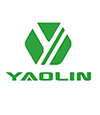Incorrect installation of head wheel and bottom wheel drive shaft of continuous hoist can easily lead to hopper belt deviation. The main manifestations are as follows: the transmission shaft of head wheel and bottom wheel is in the same vertical plane and not parallel; both transmission shafts are installed in the horizontal position and not in the same vertical plane; the two transmission shafts are parallel, in the same vertical plane and not horizontal. After the above situation occurs, the hopper belt deviates, which easily causes the impact between the hopper and the barrel, and the tear of the hopper belt. In addition, the head of continuous hoist bears large dynamic pressure, up to about 100 tons. Extrusion wear is unavoidable in bearing position due to long operation.
Traditional methods are repaired by repairing welding or brush plating, but both of them have some drawbacks: the thermal stress caused by high temperature of repairing welding can not be completely eliminated, which can easily cause material damage and lead to bending or fracture of parts; while brush plating is limited by coating thickness and easy to peel off, and the above two methods are metal repairing, which can not change the "hard-to-hard" relationship. Under the combined action of force, it will still cause re-wear.
Analyse and solve < br />.
1. Abnormal sound < br /> occurs during operation of continuous hoist.
(1) The base plate of the bucket type continuous elevator and the chain bucket collide to adjust the elastic device of the base so as to tighten the chain.
(2) Relaxation of key of drive shaft and driven shaft, displacement of sprocket and collision of chain bucket and chassis. Adjust the sprocket position and tighten the key.
(3) The guide plate collides with the chain bucket and trims the position of the guide plate.
(4) Material is clamped between the guide plate and the chain bucket, and the material throwing angle of the base part of the enlarger is enlarged.
(5) Bearings should be replaced if they fail and cannot operate flexibly.
(6) Material blocks or other foreign bodies are stuck in the seat housing, and the machine stops to remove foreign bodies.
(7) The teeth of sprockets (transmission and driven sprockets) are not correct, and the teeth of sprockets are corrected or the sprockets are replaced.
(8) The gear detachment between the transmission sprocket and the chain is bad, and the tooth profile of the transmission sprocket is corrected.
(9) The transmission chain produces idle rotation and adjusts the length of the chain.
(10) Installation of the chassis is not correct and the verticality of the whole length of the chassis is adjusted.
2. Vibration of motor base of continuous hoist
(1) The motor itself rotates badly, unload the rotor and check the static balance.
(2) The installation accuracy of reducer and motor is poor, and the center of the reducer exceeds the specifications, so it should be readjusted.
(3) Installation accuracy of motor base is not enough, and the level of motor base exceeds the standard requirement, so it should be readjusted.
(4) There are errors in the installation of transmission sprockets, which need to be readjusted.
(5) The gear profile of transmission sprocket is bad, so it needs to be corrected.
(6) The tightness of the transmission sprocket is not appropriate and should be adjusted again.
3. Continuous hoist ash leakage
(1) Seal gasket damage or leak gasket in full-length flange of casing, replace new gasket, apply sealant, and tighten flange bolt again.
(2) Material leaks from the cracks in the head and seat, adding gaskets or coating sealants.
(3) The height difference of the input material is too large, which increases the pressure of the input material. It is necessary to change the input method of the material and increase the buffer device of the input material.
4. Lifting capacity is not up to design capability < br />.
(1) Material is bonded to the chain hopper and slide, and material is removed regularly according to the bonding degree.
(2) The capacity of the front mechanical equipment of the continuous hoist is insufficient, resulting in a small amount of material input, so that the continuous hoist can not reach the design capacity. It is necessary to improve the production capacity of the front mechanical equipment,
(3) The lifting speed is slow, so the speed ratio of transmission sprocket should be changed.
(4) Improper or incorrect material measurement methods, check the meter, check the specific gravity of the material, and revise the calculation method.
5. Material discharge of continuous hoist is insufficient
(1) Continuous hoist rear mechanical equipment capacity is small, so that the discharging chute blockage, improve the production capacity of rear mechanical equipment.
(2) The discharging chute is too small or the angle of the chute is not suitable to correct the discharging chute.
(3) Material is adhering to chain hopper and slider, and material should be removed regularly.



